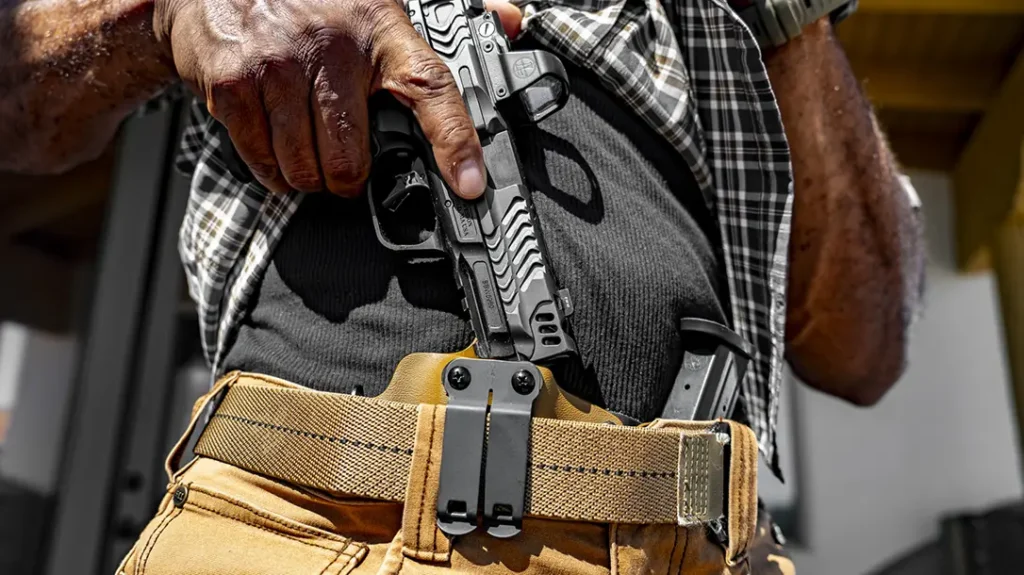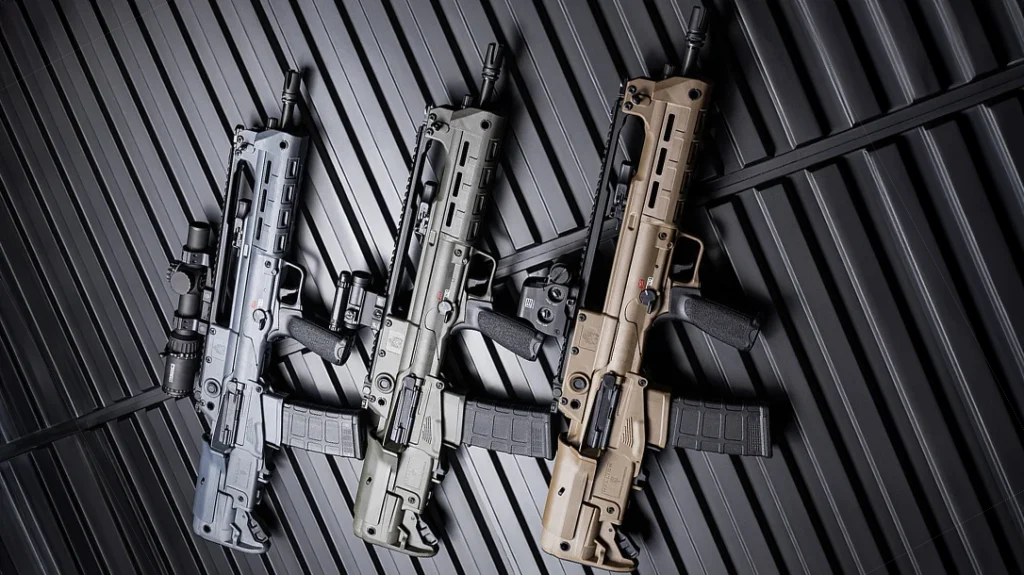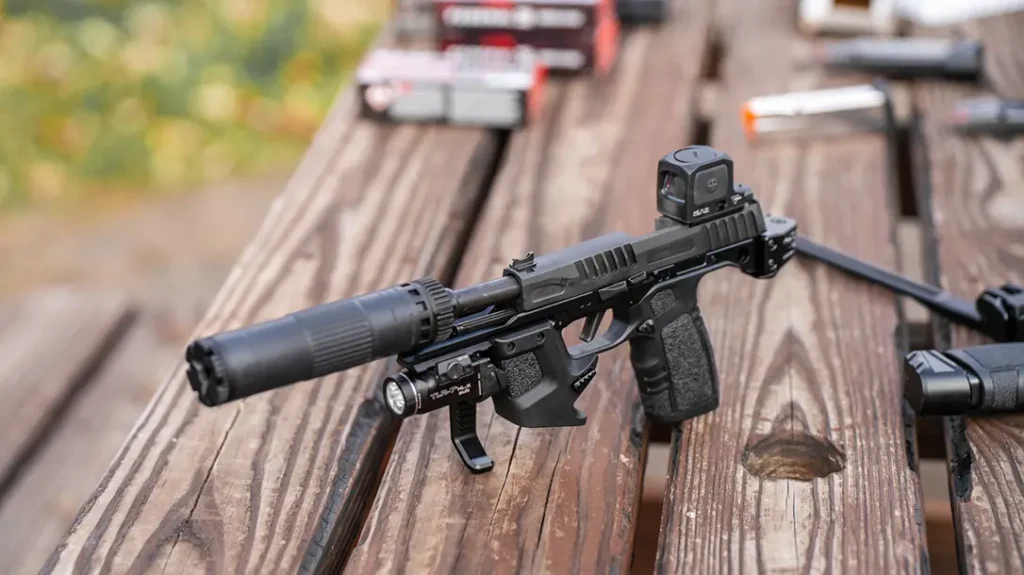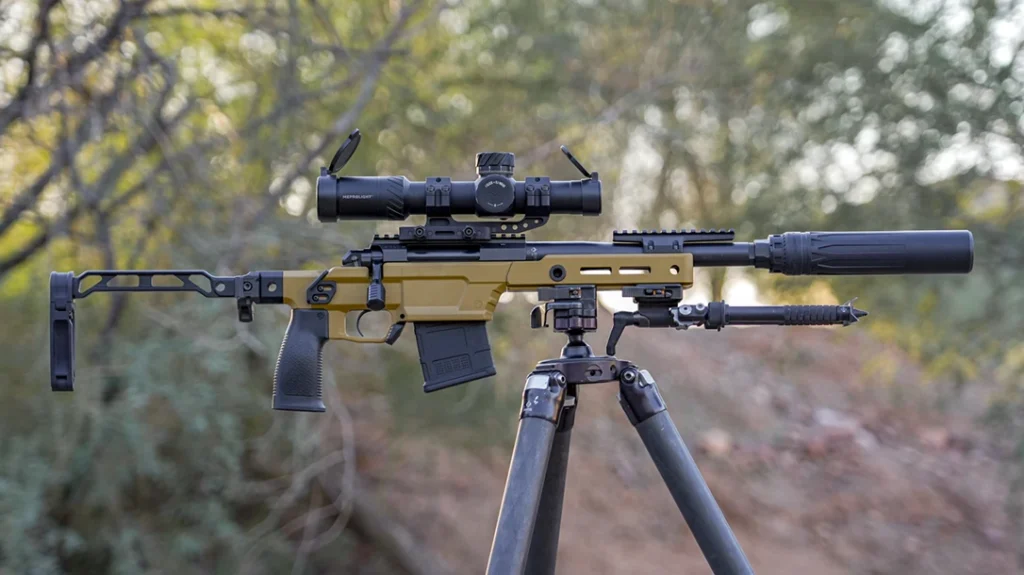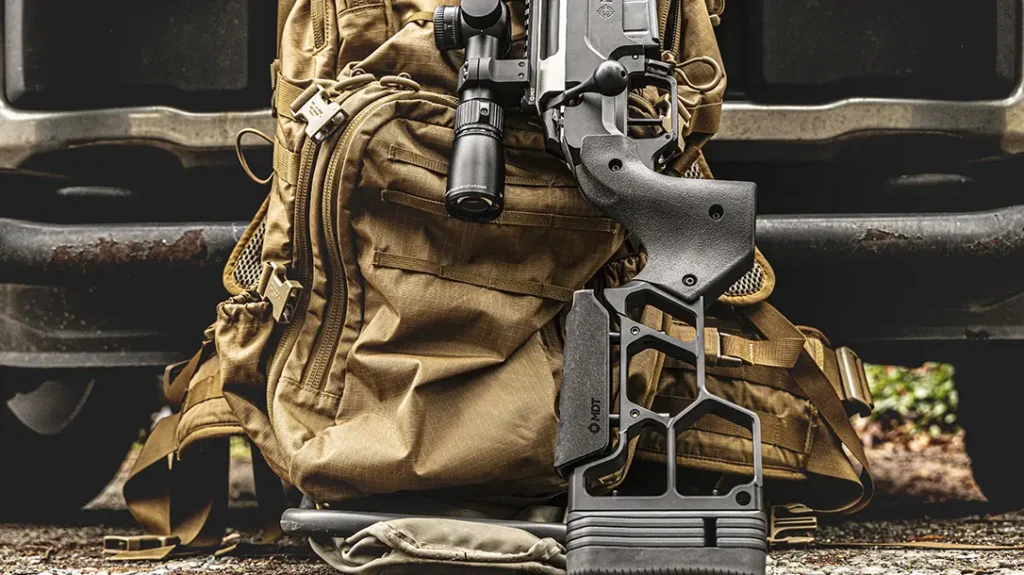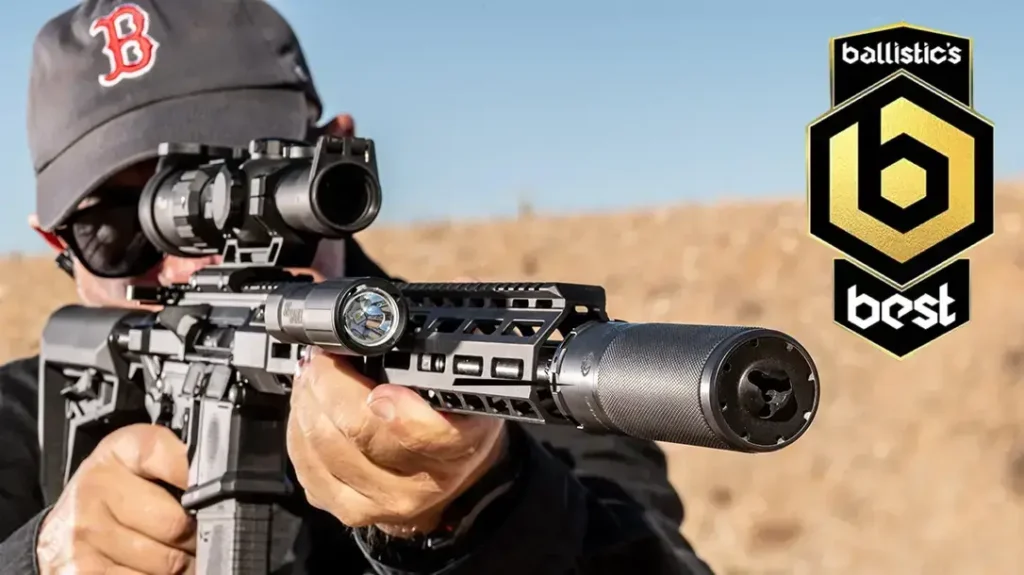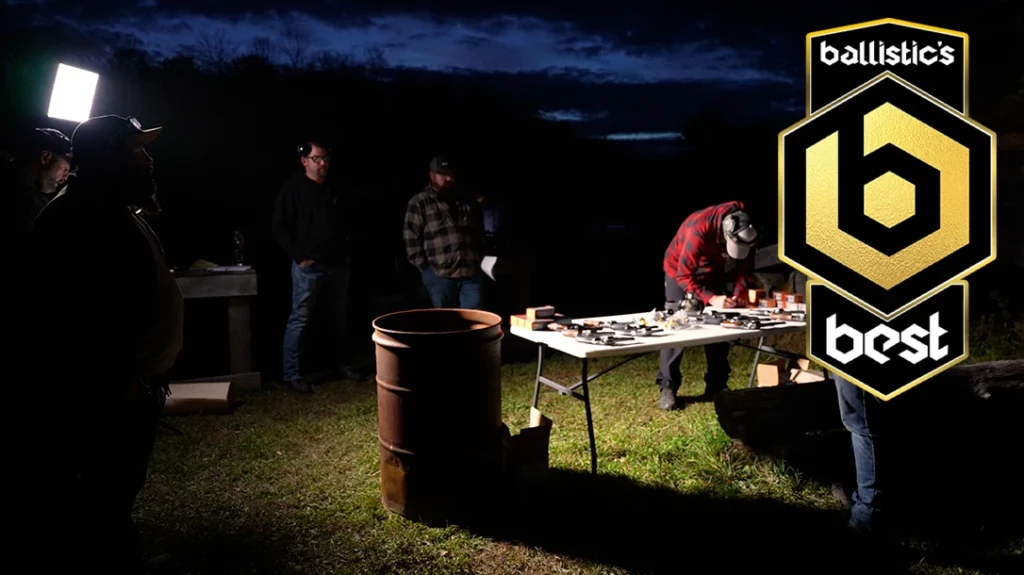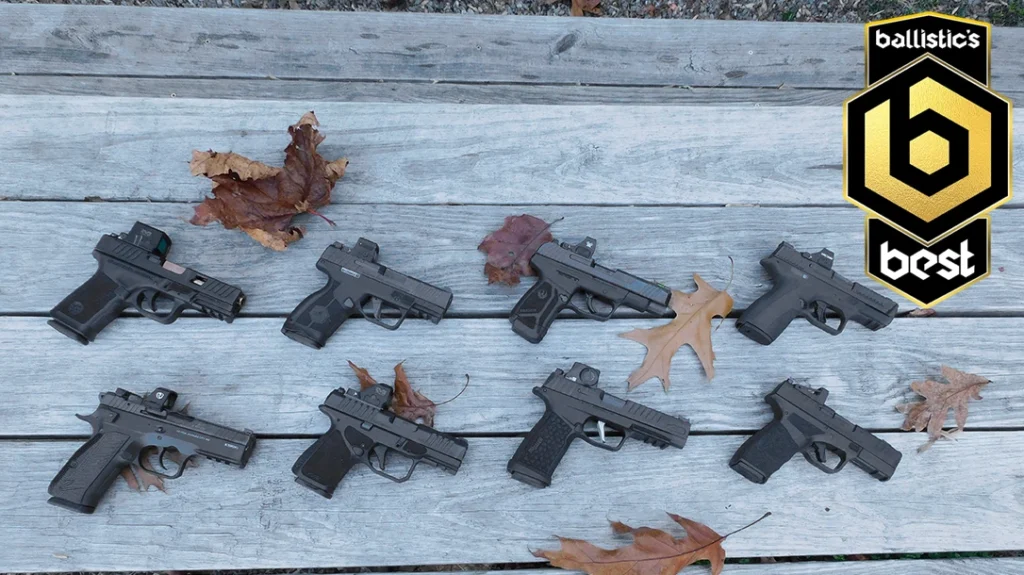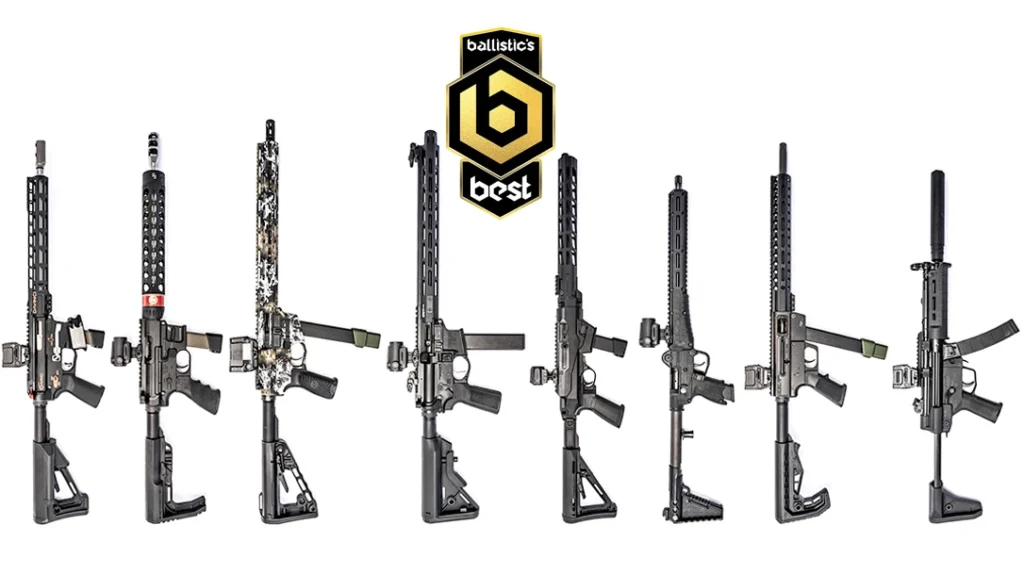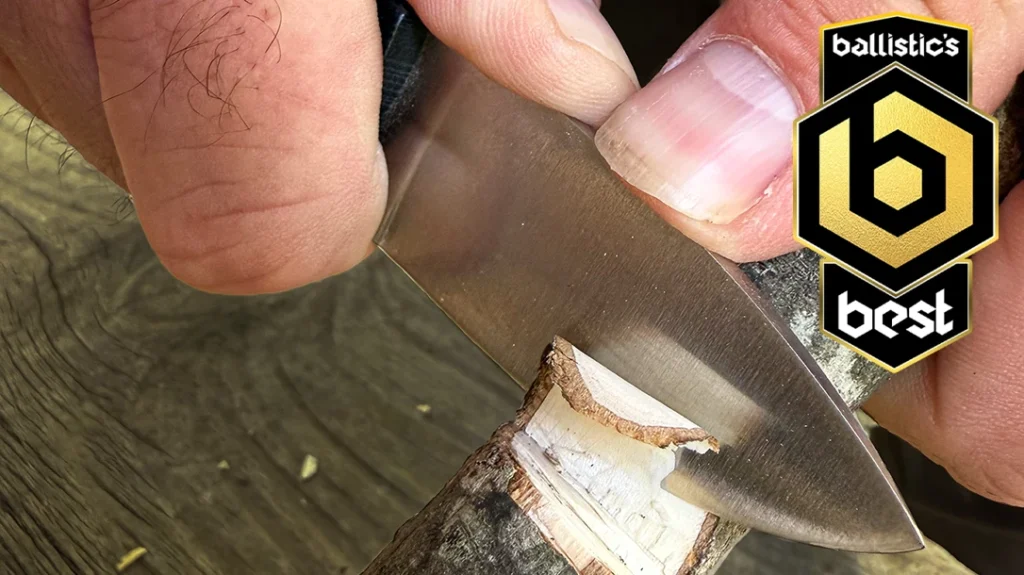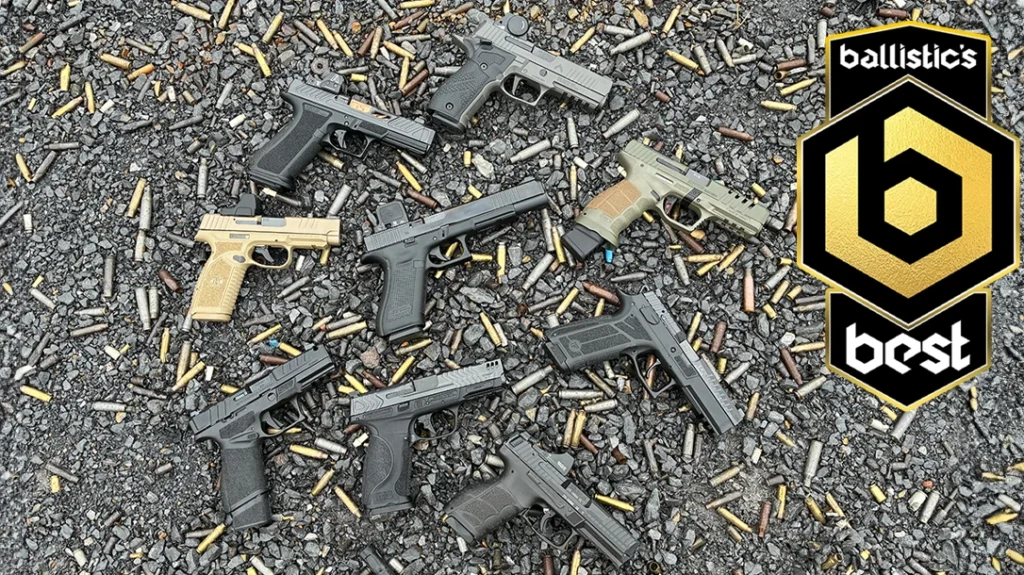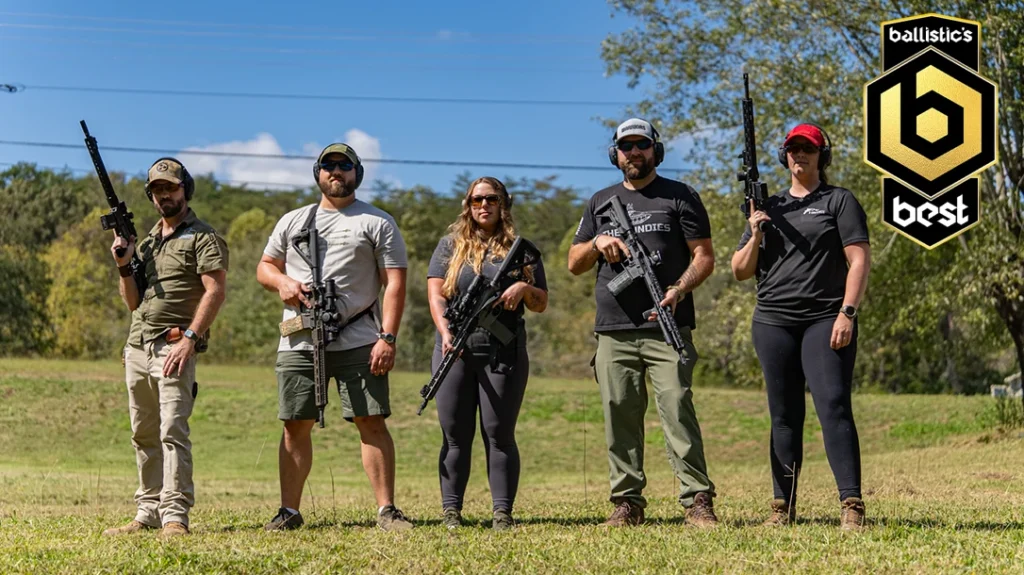Nearly 25 years of carrying the same pistol makes changing that habit difficult, to say the least. A Gen 2 Glock 19 (which I still have) was my ride-or-die. I carried it from 1993 or so until making a hard switch to the M&P 2.0 when it first debuted. Since then, Smith & Wesson has released the M&P 2.0 Metal Carry Comp, and I have moved to it but needed a holster.
Holsters for the Smith & Wesson M&P Metal Carry Comp
It was that particular model that gave me the assurance of functional reliability, although I had been shooting the original full-size and Pro model for many years, nearly exclusively during extensive tactical pistol training. I’ve always shot the M&P well. And those years of training only solidified that. Once I could move past the Glock reliability inferiority complex, I enjoyed the M&P for many years of carry.
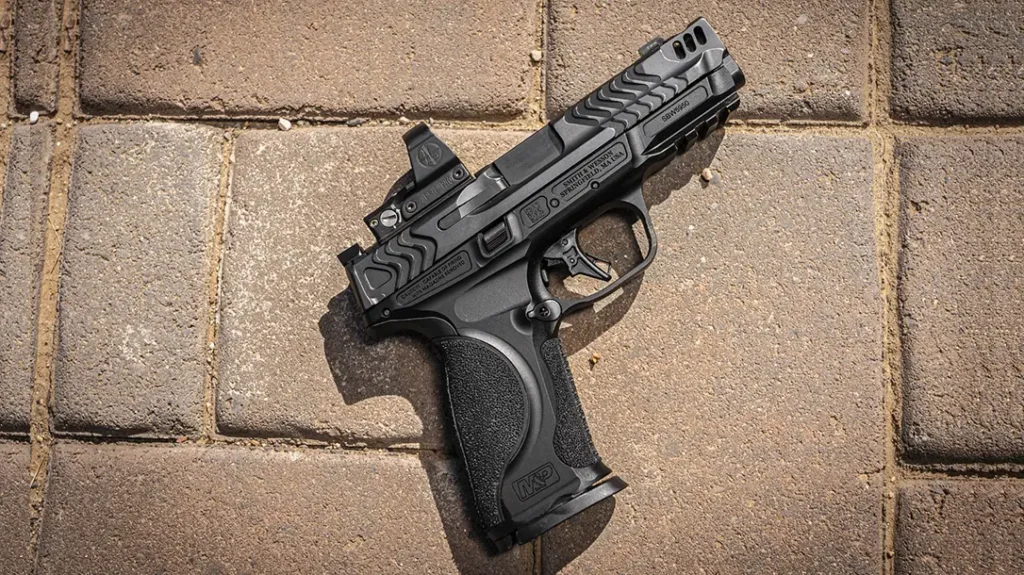
Advertisement — Continue Reading Below
I’m not one to jump on bandwagons immediately. And when the M&P metal came out, I was skeptical. My reservation wasn’t a weight-related one. It was a heat-related one. Metal guns get hot when you are sending lots of rounds. But if the metal design added benefit, I was willing to look past this flaw.
I reached out to S&W for a M&P 2.0 Metal Carry Comp, as I was confident it would shoot well. It didn’t even matter if the comp added any noticeable benefit. They also sent out a M&P 2.0 Compact in the run-of-the-mill polymer frame configuration for comparison. Particularly since I carried one of those for several years.
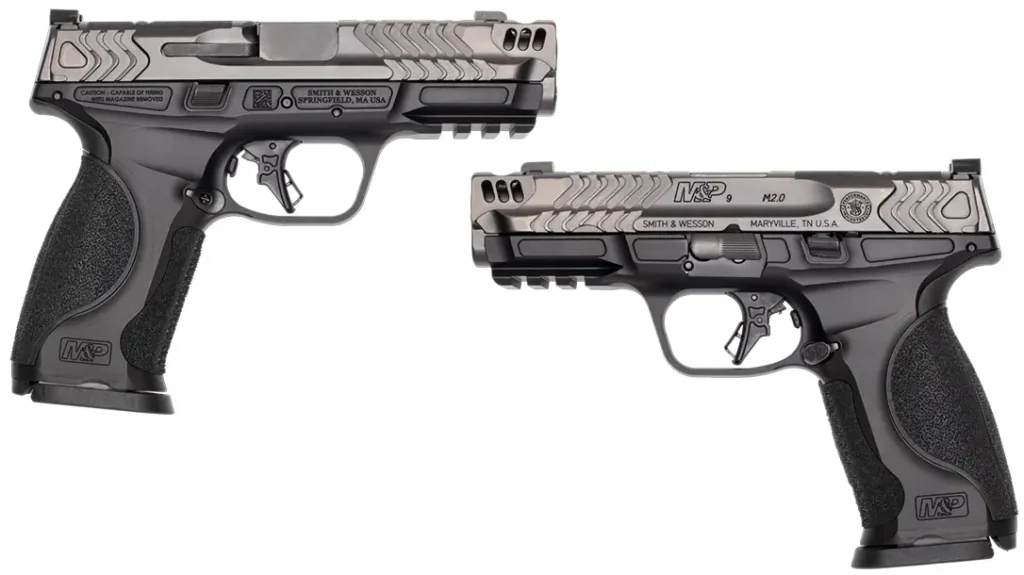
Advertisement — Continue Reading Below
The Metal Carry Comp is a solid pistol. It’s easy to shoot, reinforcing what I, as many, have come to love about it. With excellent ergos thanks to the 18-degree grip, ample stippling, interchangeable backstraps, optics readiness, compensator, and upgraded aesthetics, the Metal Carry Comp is a tough pistol to beat.
Picking the Right Holster
I wanted to know if the Carry-Comp would indeed carry and how well. That meant holsters were needed. I’m an appendix-carry-only type of guy. I made this carry commitment many years ago, before even understanding that I needed a holster for the Glock.
Yes, that’s how I rolled in my 20’s—a good belt, tuck the Glock, roll out. I suppose I’m a bit more cautious these days.
Advertisement — Continue Reading Below
When picking a holster, your physical makeup must reign supreme over the decision process. I’m still a relatively trim guy. My weight is just 10 pounds above my high school weight, which is likely mostly ego-added weight.
My chest, although not as perky as when younger (man boobs are a thing), still sticks out past my upper gut. This allows t-shirts to hang over my midsection without revealing too much of anything tucked in my belt. A solid meal can change that, though.
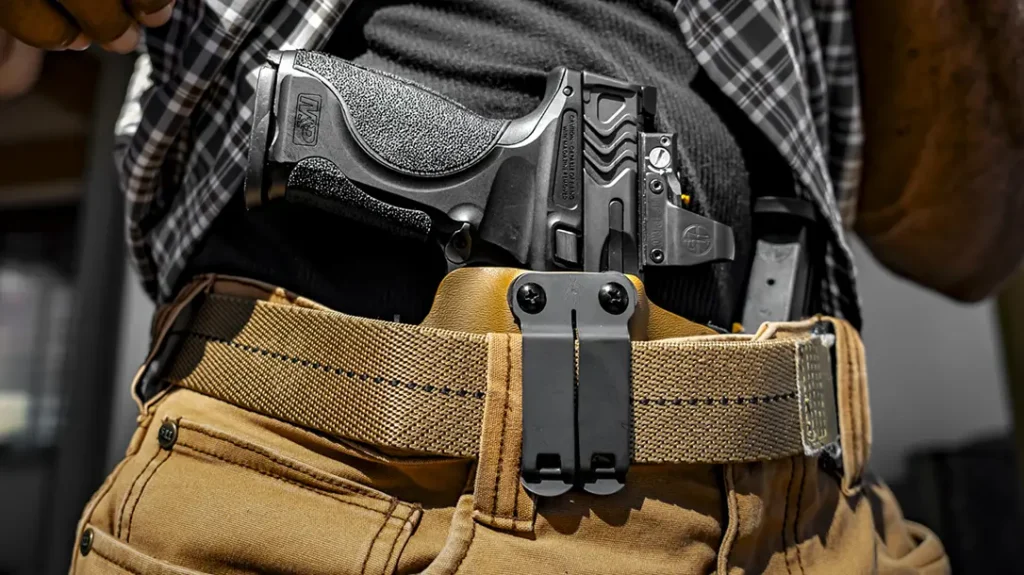
Advertisement — Continue Reading Below
My concealment challenge comes from my rather narrow midsection width. This can reveal the grip of the pistol depending on clothing, pistol choice, and holster choice. It can be a delicate dance.
Another challenge I’ve found with holsters over the years is having enough room between the grip and the belt for my hand to get a solid grip on the pistol while trying to draw at speed. Sometimes, the pistol can ride too low in the holster. Likewise, a sturdy and durable belt can interfere with access to the pistol, depending on the holster design.
With these factors in mind, here’s how things shook down.
Advertisement — Continue Reading Below
Galco
The Paragon 2.0 IWB holster is a rather sturdy holster of Kydex construction. It features adjustability for ride height and angle and can be used with dual tuckable belt clips or a patented UniClip. It’s cut low for the Leupold Delta Point Pro on the Carry Comp. It also features a stabilizing wing, which is ideal for me, and it also has a raised sweat guard.
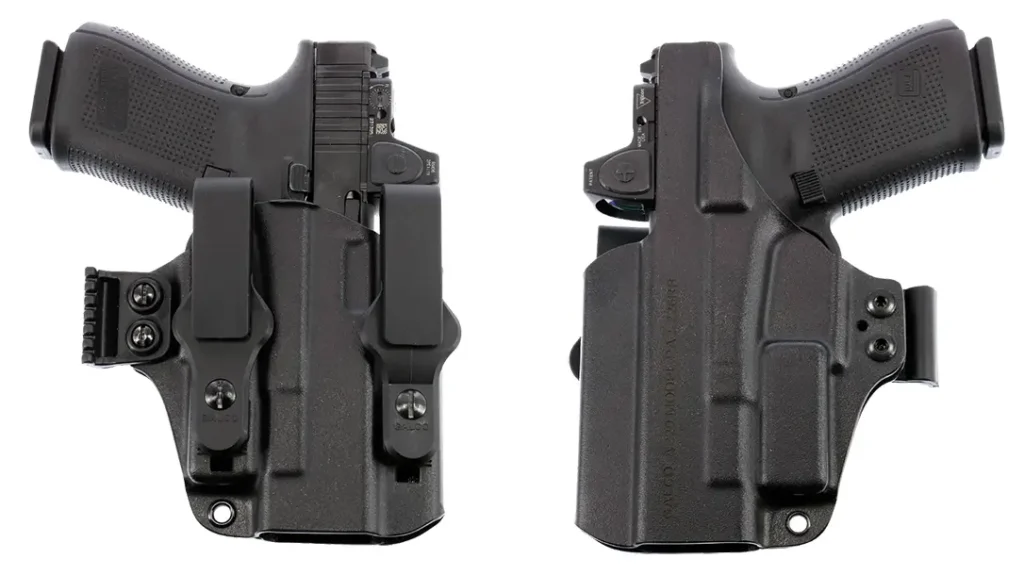
The paragon rides dead center of my stomach. With the adjustment all the way down on the holster, it places the gun high enough for an unobstructed grip while still keeping the pistol close to the body. Printing is minimal with this one, with the longish grip of the Carry Comp poling out slightly on the side.
Advertisement — Continue Reading Below
Desantis
The Desantis Slim-Tuk surprised me. It’s classified as a minimalist IWB holster but features adjustability beyond that. The 360-degree C clamp is adjustable. Likewise, ride height and angle can also be adjusted.

Initially, I thought I’d like this holster the least, thinking it wasn’t enough. But after fitting it off to the right of my midsection in the curve of my body, I found it to be very comfortable. It had the expected drawing clearance, although the clip hit my knuckles when drawing. It also hid the Carry Comp well and was nearly undetectable.
Advertisement — Continue Reading Below
Younger me loves this holster as it feels the most like my younger carry days of no obstruction or limitation in movement. It almost feels like “it’s not there.”
Black Point Tactical
The DualPoint AIWB holster from BlackPoint Tactical should be upfront and center on their website landing page. I like this holster, and I like it more with each use. It features a minimal footprint that is comfortable and secure while being more structured than many minimalist holsters.
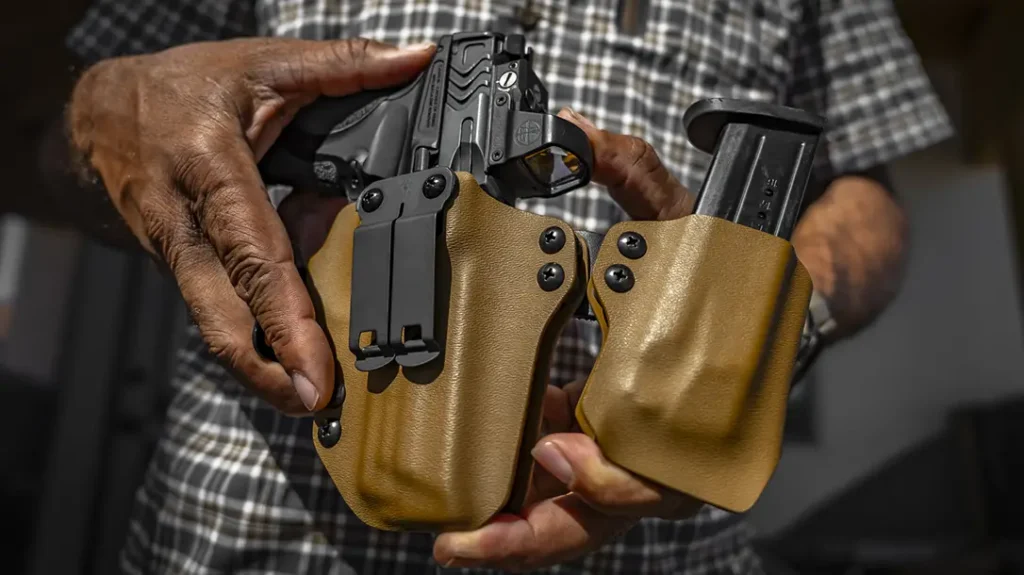
Advertisement — Continue Reading Below
Ride height, cant, and tension are all adjustable, and the side-mounted strut loop keeps the pistol close to the body. This strut loop is metal, and that makes a difference. You can attach a mag pouch to the DualPoint as well. While I didn’t think I’d like this setup, I do. This holster rides well right in the center of the body and has a tall sweat guard.
The DualPoint can also be converted into a small OWB holster, with a quick hardware change provided with the holster.
M&P M2.0: Metal v Non-Metal
There are several differences between the M&P M2.0 Carry Comp Metal and the M2.0 Compact, visually and on paper. But they feel amazingly similar. In fact, when I closed my eyes and picked each gun up separately, my hands couldn’t tell the difference between them unless I changed my grip to unveil certain features.
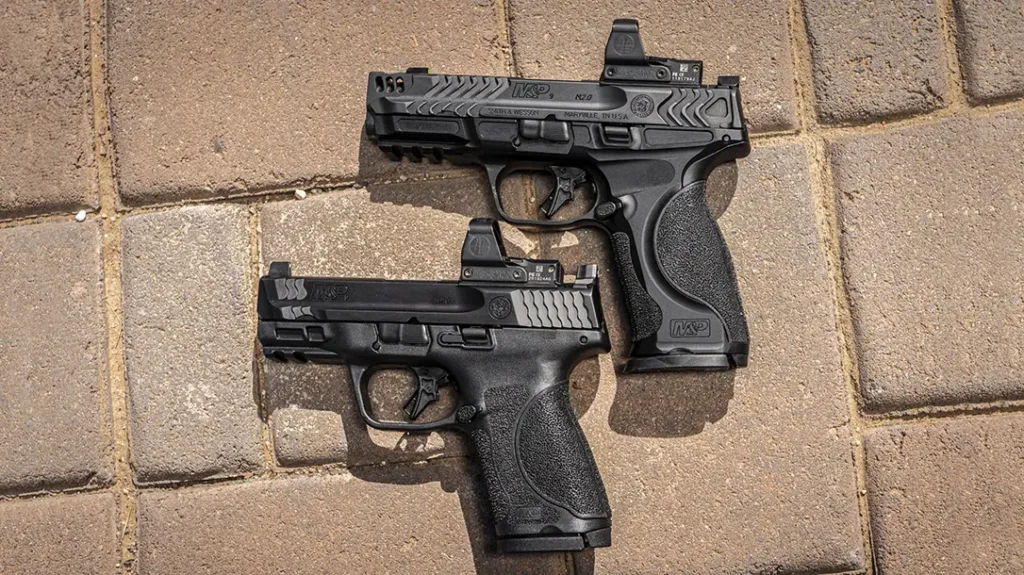
The biggest feature difference is the break in the grip texturing between the front strap and the interchangeable backstrap. My fingers ever so slightly brush against that smooth metal surface on the metal, revealing its identity. But beyond that, Smith & Wesson has done an excellent job of keeping things consistent and familiar.
There’s roughly .75-inch more pistol in the barrel and grip length. On the barrel side of things, that didn’t seem like a big deal. However, when you look at the grip, you wonder if it will hinder things. Depending on your body type, that could make all the difference between printing or not.
Holster Selection is a Personal Choice
Each of these holsters has its merits. While what you carry is extremely personal, your holster selection when you carry is even more personal. So, don’t look for some definitive statement on which is the best of these. Each is different and can work for various scenarios and differences in your wardrobe for the day.
I’d say the BlackPoint Tactical offers the best of both worlds with the attached wing/mag pouch. It’s structured but not as structured as the Galco; both allow good access to the pistol grip. The Desantis is the most comfortable of the three, riding lower but fitting better in my personal crevices. It’s not as easily accessible, but it’s accessible nonetheless.
Whatever you decide to carry, take the time to do research and make sure it will work for your needs.
